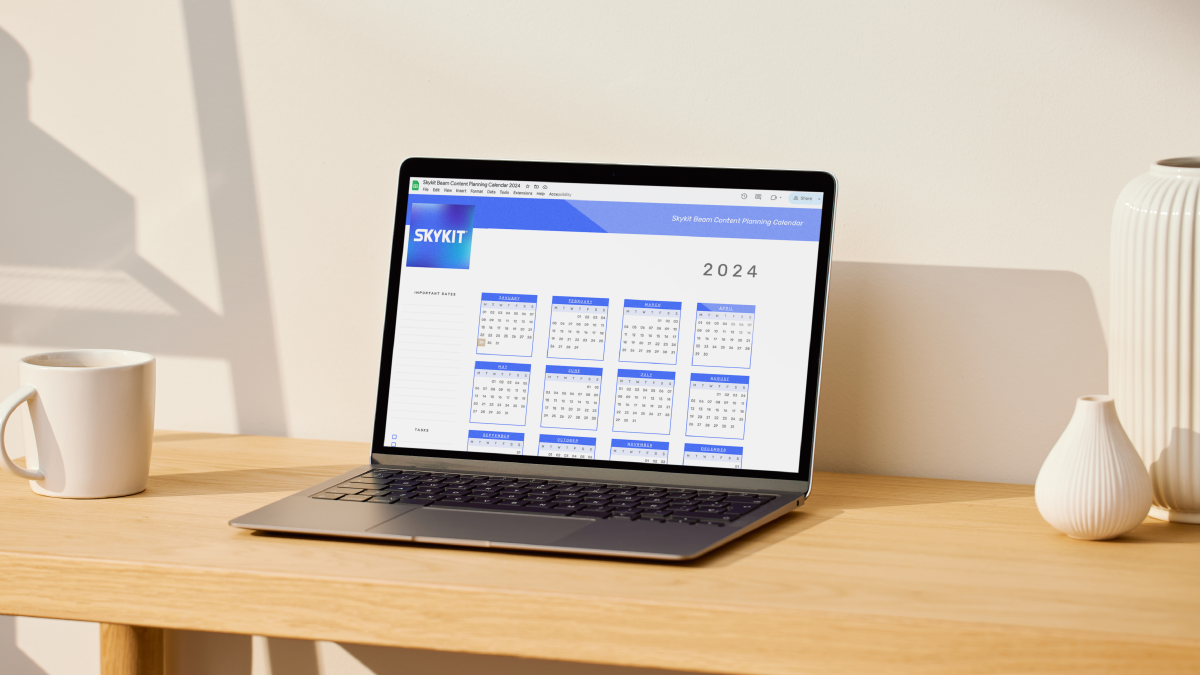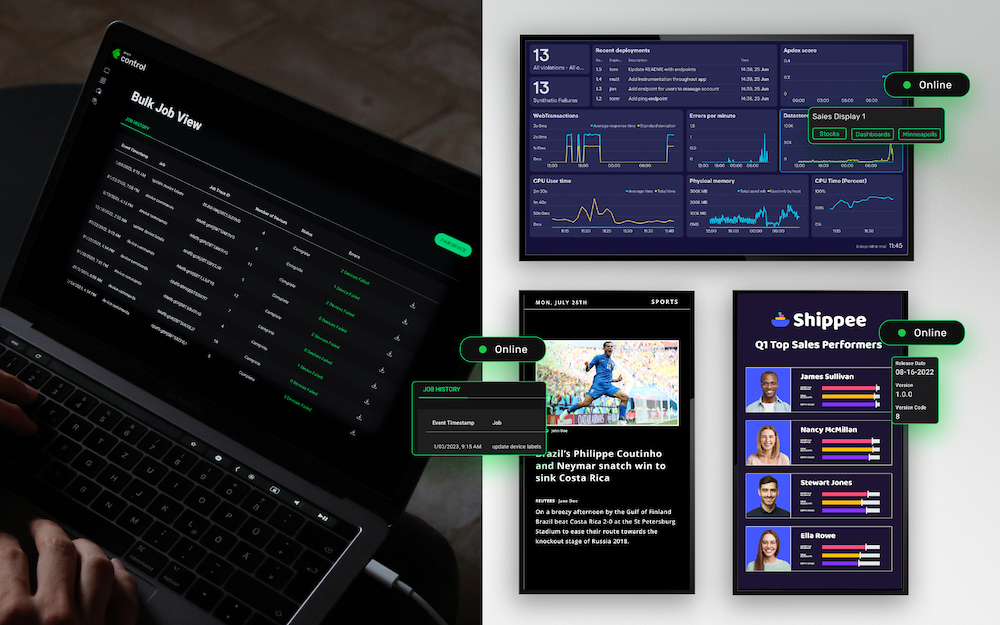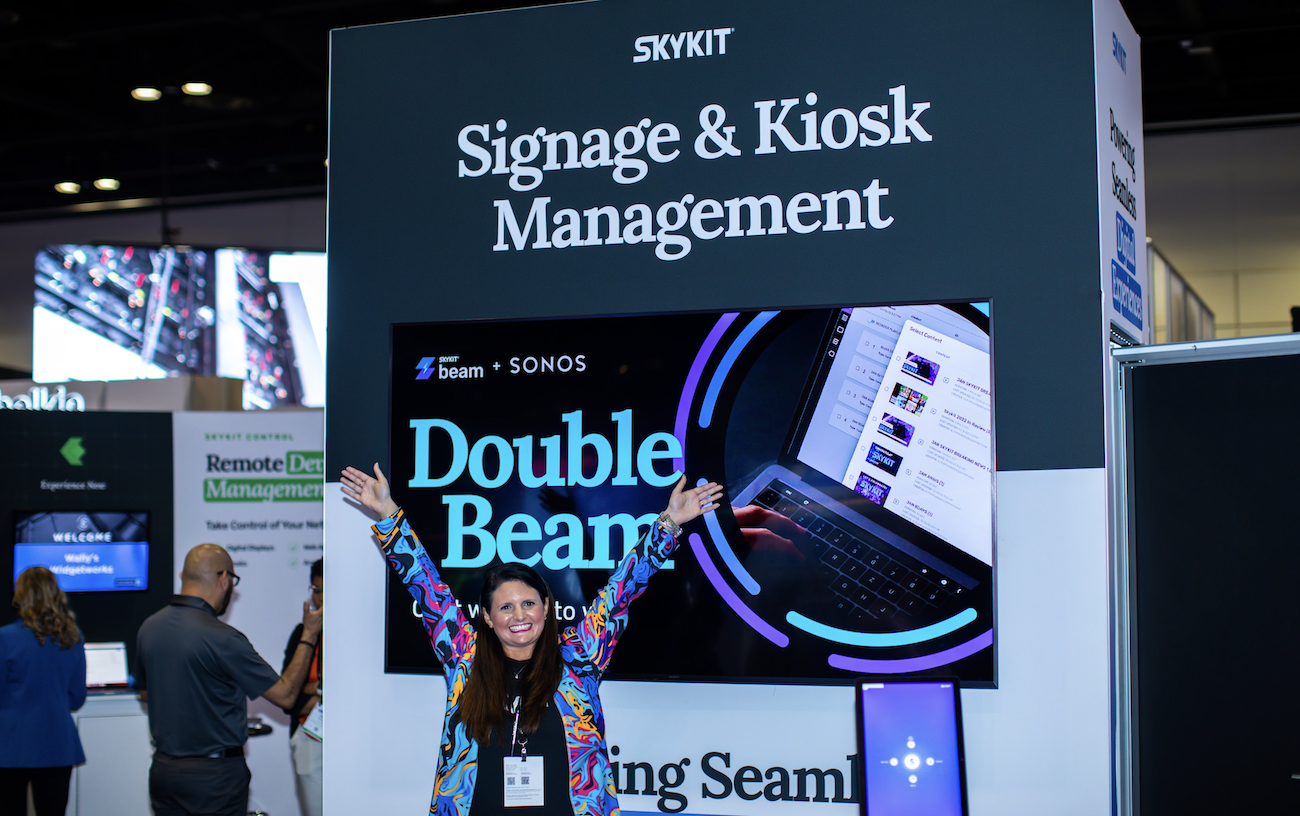Discover expert kiosk management and digital signage targeting best practices, including sign location, audience targeting, campaign purpose, and brand identity, to maximize impact and create compelling experiences.
Digital Signage Targeting Location
Depending on the location and purpose, there are different types of signs, such as Point of Transit, Point of Sale, and Point of Wait signs, all of which require a tailored approach for effective digital signage targeting.
Point of Transit Digital Signage Targeting
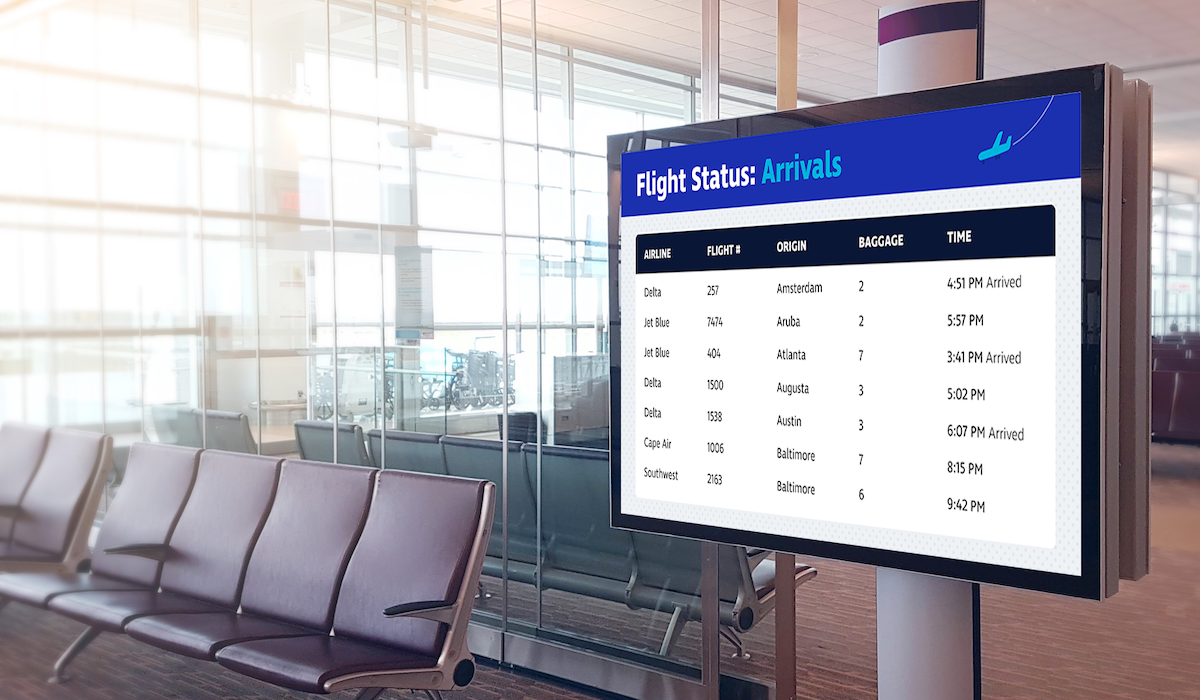
For digital signage targeting at Point of Transit signs, locations, where the audience is typically on the move, it’s crucial to keep the content concise and attention-grabbing.
These signs include wayfinding kiosks found at airports and digital billboards stationed alongside or within public transit.
Given that the average dwell time is only a few seconds, it’s essential to cycle through multiple segments quickly to increase the chances of the audience seeing multiple messages.
Point of Sale
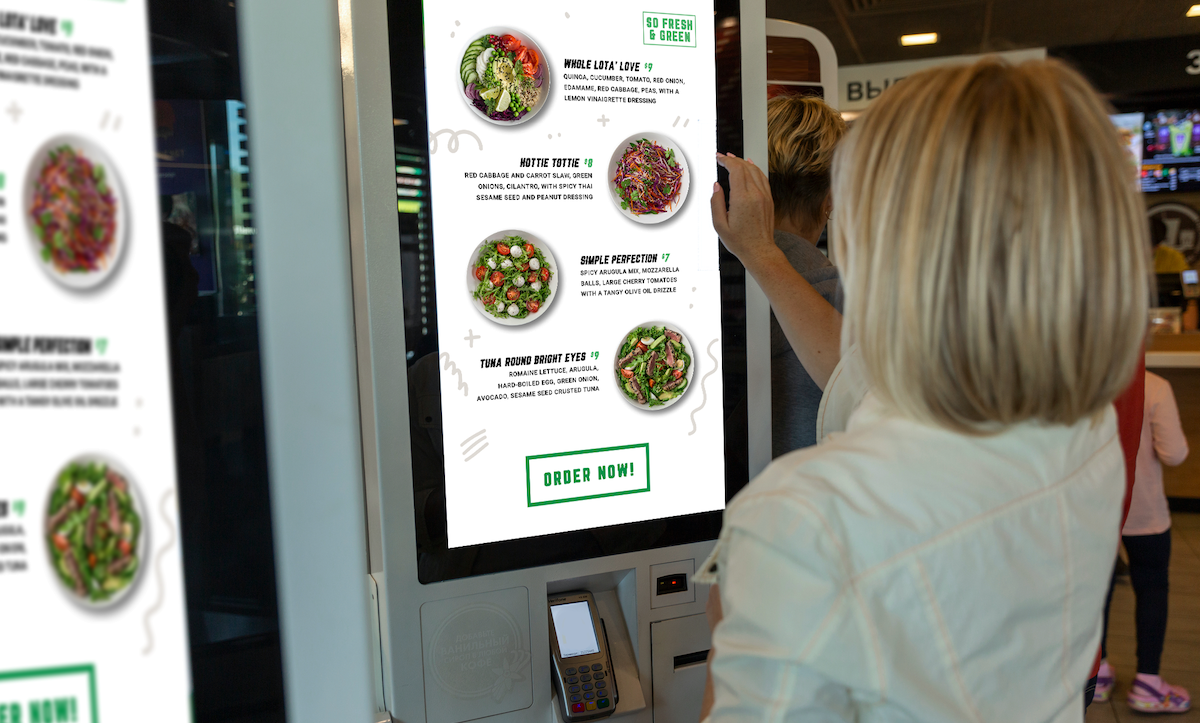
Digital signage targeting Point of Sale signs is strategically focused on areas where the audience is engaged in a specific purpose, such as making a purchase.
Here, the content should be immediately relevant, engaging, and focused on opportunities, like a sale or giveaway. Regularly switching between segments is vital to avoid audience fatigue.
Point of Wait Digital Signage Targeting
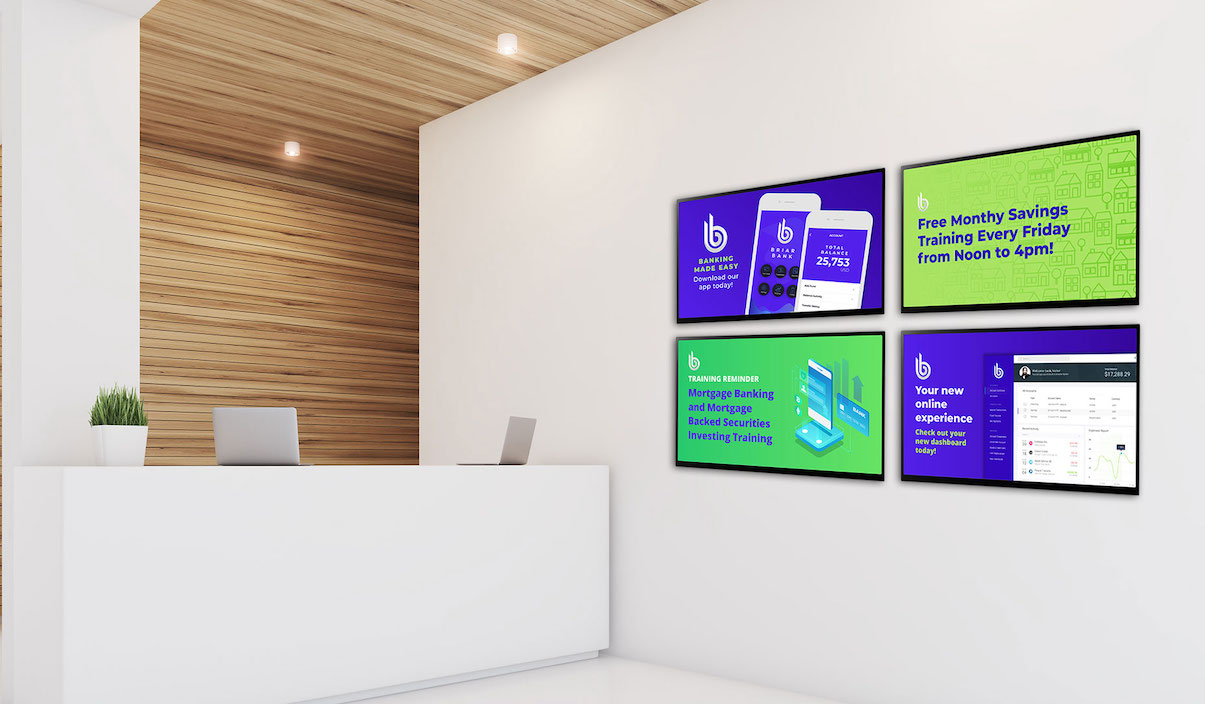
Point of Wait digital signage targeting is geared toward areas where the audience is waiting, such as in a queue or waiting room.
These signs have a captive audience, allowing for longer messages and more words per segment. However, since the audience may be distracted by their phones, it’s beneficial to include trivia or fun facts to maintain their attention.
Additionally, catering to the different moods of the audience by providing both informative and entertaining content can be a smart digital signage targeting strategy.
Digital Signage Targeting: Who’s Seeing It?
It’s important to understand that not all target audiences react to content equally, and age is a significant factor to consider in your digital signage targeting strategy.
For instance, if you offer a senior discount at your store every Thursday, the messaging for that day should not focus on social media engagement.
On the other hand, if you have a vintage clothing store in Brooklyn, you can digital signage target your younger-skewing customers with social media-oriented content since they are more likely to be active on social platforms.
When designing content for a specific audience, it’s crucial to consider their demographics, such as age, gender, and profession, to inform design, information, and call-to-action choices.
For example, if your target audience consists of no-nonsense professionals, you’ll want to use sleek designs with simple color schemes to convey professionalism and competence, enhancing your digital signage targeting efforts.
How are you Approaching the Campaigns around Digital Signage Targeting?
The purpose of your digital signage targeting content will depend on its intended function, with six main purposes:
- Educational: Educational content is useful for providing information to customers and employees through digital signage targeting. This can include product demos, testimonials, comparison charts, and training videos.
- Informational: Informational content answers common questions and provides details about upcoming events, directions, or wayfinding. It should prioritize clear communication above aesthetics in your digital signage targeting efforts.
- Entertaining: Entertaining content is necessary to keep your audience engaged during digital signage targeting. This can include live streaming, weather updates, news, and infotainment.
- Conversion: Conversion-focused content is designed to motivate your audience to take action, such as signing up for a loyalty program or switching from a different product or brand through digital signage targeting.
- Promotional: Promotional content is flashier than informational content and aims to create awareness about how amazing your company or product is through digital signage targeting. It can include upcoming events, testimonials, award programs, and Social feeds.
- Advertising: Finally, ads are an essential part of digital signage targeting but shouldn’t dominate all of your content. Consider repurposing traditional ads or creating new ones tailored to the venue and dwell time. Contextually relevant content, such as merchandising ads in retail, can enhance the customer experience and improve ROI through digital signage targeting.
Why is it Important to Manage Expectations in Digital Signage Targeting?
When creating digital signage targeting content, it’s crucial to manage expectations by considering what is typical in your industry and your business.
For instance, if you have a sports equipment store, customers might expect to see images of athletes in action, bold fonts, and products like shoes and sports drinks in your digital signage targeting campaigns.
It’s important to understand what your competitors and other industry leaders are doing to avoid confusing your customers or falling short of their expectations with your digital signage targeting efforts.
Study their language, imagery, and content to understand what is standard and effective. You don’t want to copy their marketing campaigns, but you can use their ideas as inspiration and give them your own unique spin during your digital signage targeting campaigns.
To find examples of successful campaigns that go beyond the norm, you can check out sites like Digital Signage Today, which feature innovative and creative approaches to digital signage targeting content.
Remember that the best way to surprise and excite your customers is to understand their expectations first and then think outside the box while staying true to your brand and industry standards in your digital signage targeting efforts.
What is your Brand Identity in Digital Signage Targeting?
A strong brand sets a company apart from its competitors. Digital signage targeting can be used to emotionally connect with consumers and build loyalty for your brand. However, it’s essential to maintain consistency with your brand when creating digital signage targeting content.
Here are three ways to ensure your brand is clear and central in your digital signage targeting:
- Keep a consistent look: Avoid generic themes and templates, and customize your content to fit your brand. Use colors associated with your brand, preferred fonts, and a collection of template slides to ensure a uniform look in your digital signage targeting campaigns.
- Create a content guide: Provide guidelines for written content to ensure it stays in the brand’s voice during digital signage targeting. Decide on the tone, focus, word choice, style guide, and terminology to use in your content, and stick to it.
- Make it all readily available: Share your guidelines and necessary files with everyone who creates content for your digital signage targeting. Consider posting them in a central location like Google Drive and being open to feedback.
As your company and brand evolve, update your guidelines accordingly in your digital signage targeting campaigns. Sharing them online allows for easy distribution of any changes to everyone with access.
Creating impactful digital signage targeting content requires a strategic approach considering the sign’s location, target audience, campaign purpose, industry expectations, and brand identity.
By carefully crafting concise, engaging content tailored to each context’s specific needs, you can maximize the impact of your digital signage targeting and foster stronger connections with your audience.

